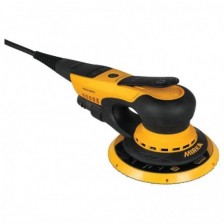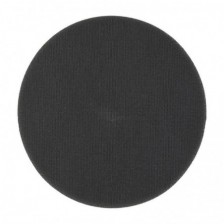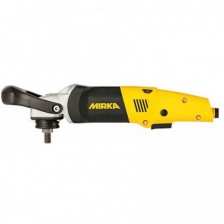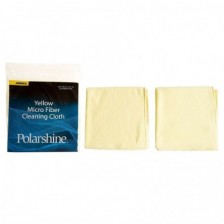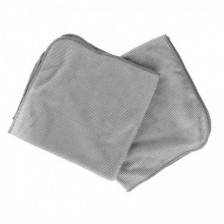How to achieve a glossy finish by polishing

When it comes to interior design, the glossy finish of a painted wooden surface can be eye-catching in interior spaces like the kitchen, but surface imperfections can be just as eye-catching.
With Mirka's solution for polishing wooden surfaces, you can remove these imperfections, such as scratches and orange peel effects, and achieve a sparkling shine.
Choosing the right combination of sanding and polishing agents and tools will get the job done quickly, easily and virtually dust-free, which means you'll save money and time spent on sanding and cleaning.
Three steps to a glossy shine
1. Sanding
.jpg)
To remove scratches and imperfections, sand the surface with a Mirka® DEROS electric sander with Microstar® P1200 sanding agent until the surface becomes completely matte. If there is a strong orange peel effect, sand the surface with Abranet Ace P1000.
2. Wet sanding
.jpg)
Proceed to wet sanding with Abralon® P3000 (make sure sanding agent and surface are wet). To protect the sander and the vacuum system from moisture, switch off the vacuum device or use the Mirka pump blocking disk.
Make sure the surface is completely sanded, then wipe it with a microfiber cloth.
3. Polishing
.jpg)
Polish the surface with Polarshine® 10 and lamb's wool sheepskin.
For an even higher shine, polish a second time using Polarshine® 10 and a yellow wafer polishing base (optional).
The process of extracting gloss on wood. How to sand and polish wood to make it shiny.
A better choice for you and the environment. Water-based polishes.
All Mirka polishes are water-based and manufactured in Finland. Water-based polishing compounds have many advantages.
Effective long-term scratch removal - water-based compounds remove scratches permanently. Solvent-based compounds may lose their gloss after cleaning with a degreaser, and in some cases they only temporarily hide scratches.
Safer for the user - no dangerous chemicals
Sustainable – Water-based polishes are more environmentally friendly because they do not contain benzene or similar hazardous chemicals.
 Catalog
Catalog
 Sanding materials
Sanding materials
 Tools
Tools
 Polishing materials
Polishing materials
 Wood finishing materials
Wood finishing materials
 Adhesive
Adhesive
 Painting equipment
Painting equipment
 Wood repair materials
Wood repair materials
 Abrasive discs
Abrasive discs
 Filters for painting chambers
Filters for painting chambers
 Adhesive tapes
Adhesive tapes
 Preparation materials for painting
Preparation materials for painting
 Personal safety products
Personal safety products
 Industrial equipment
Industrial equipment




